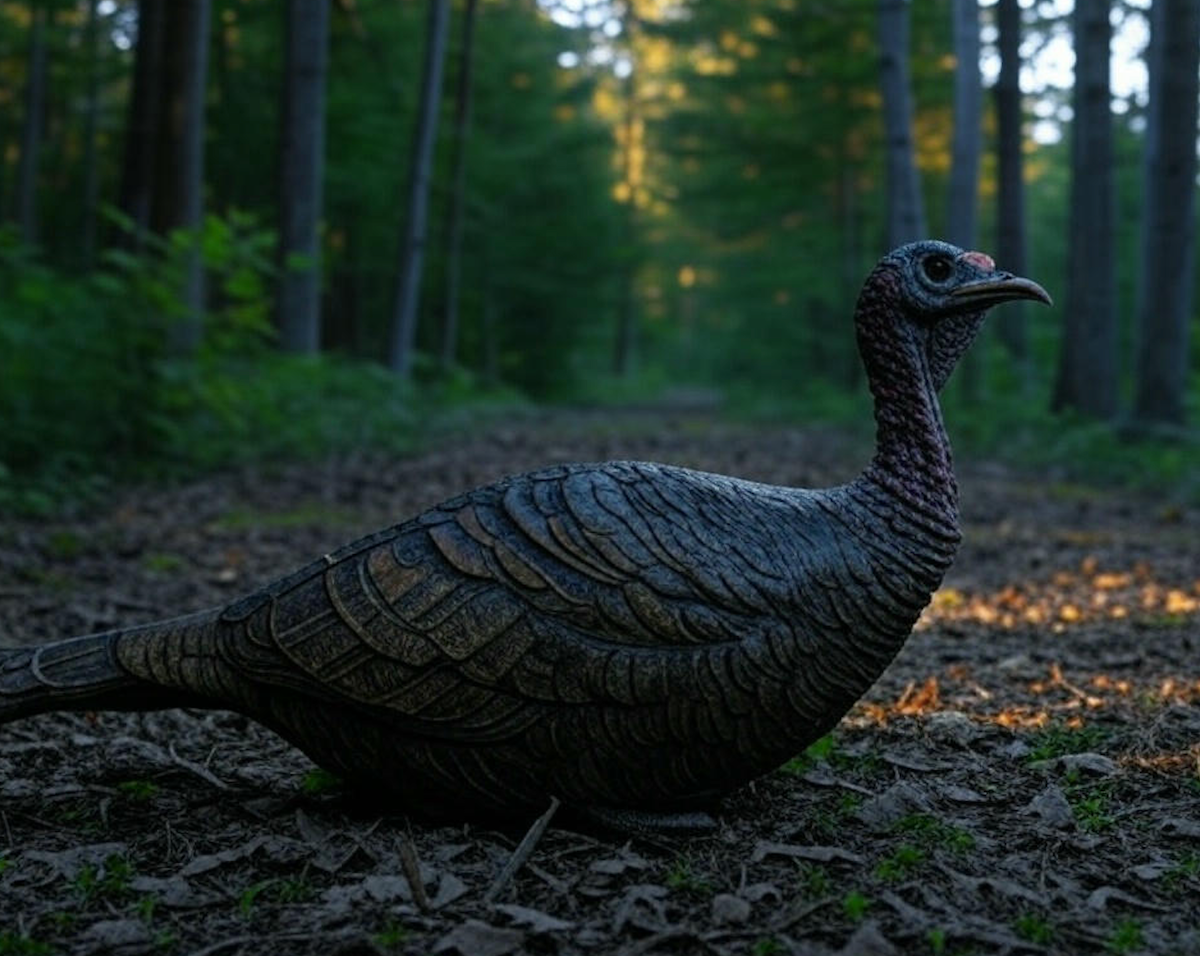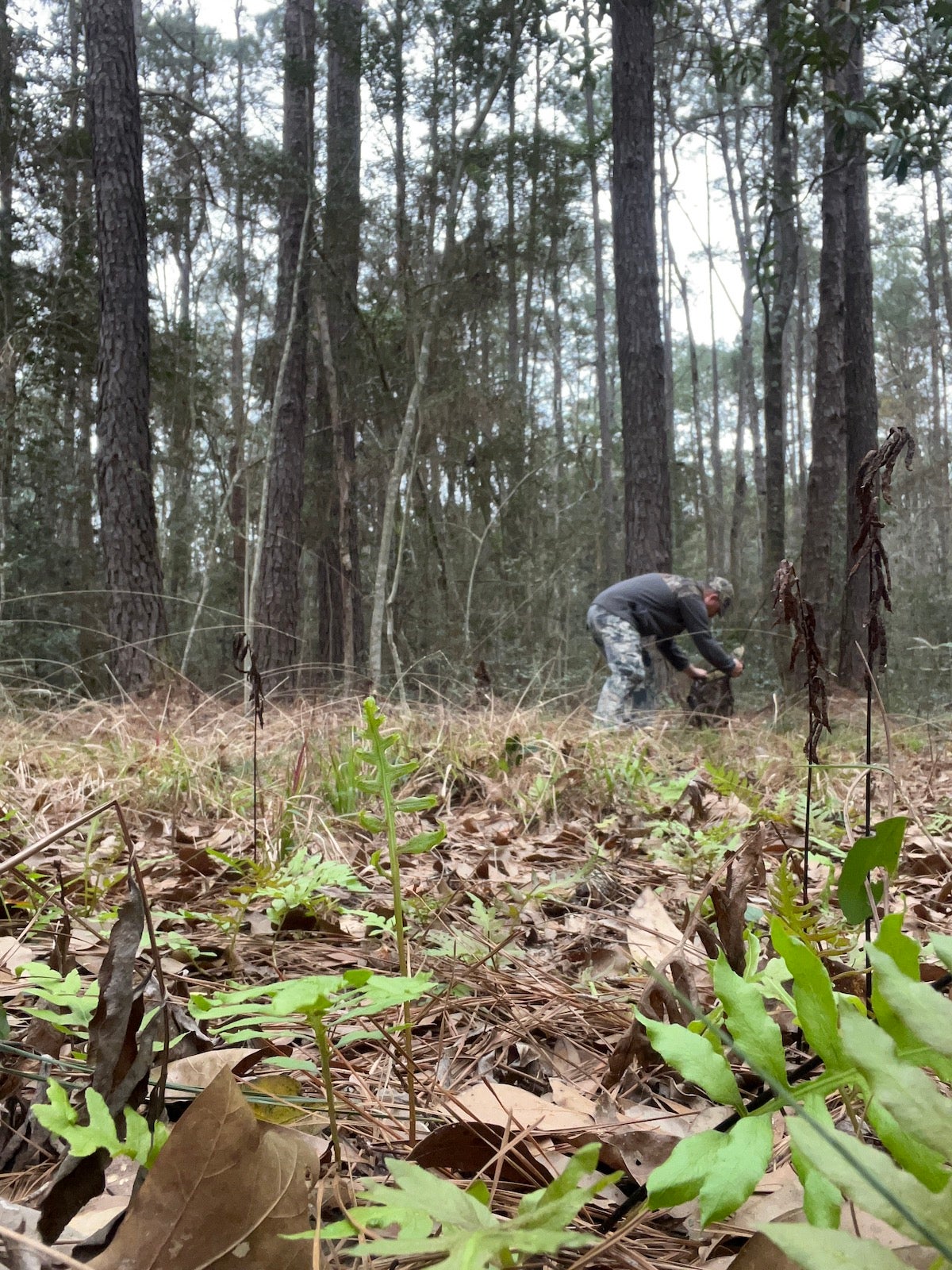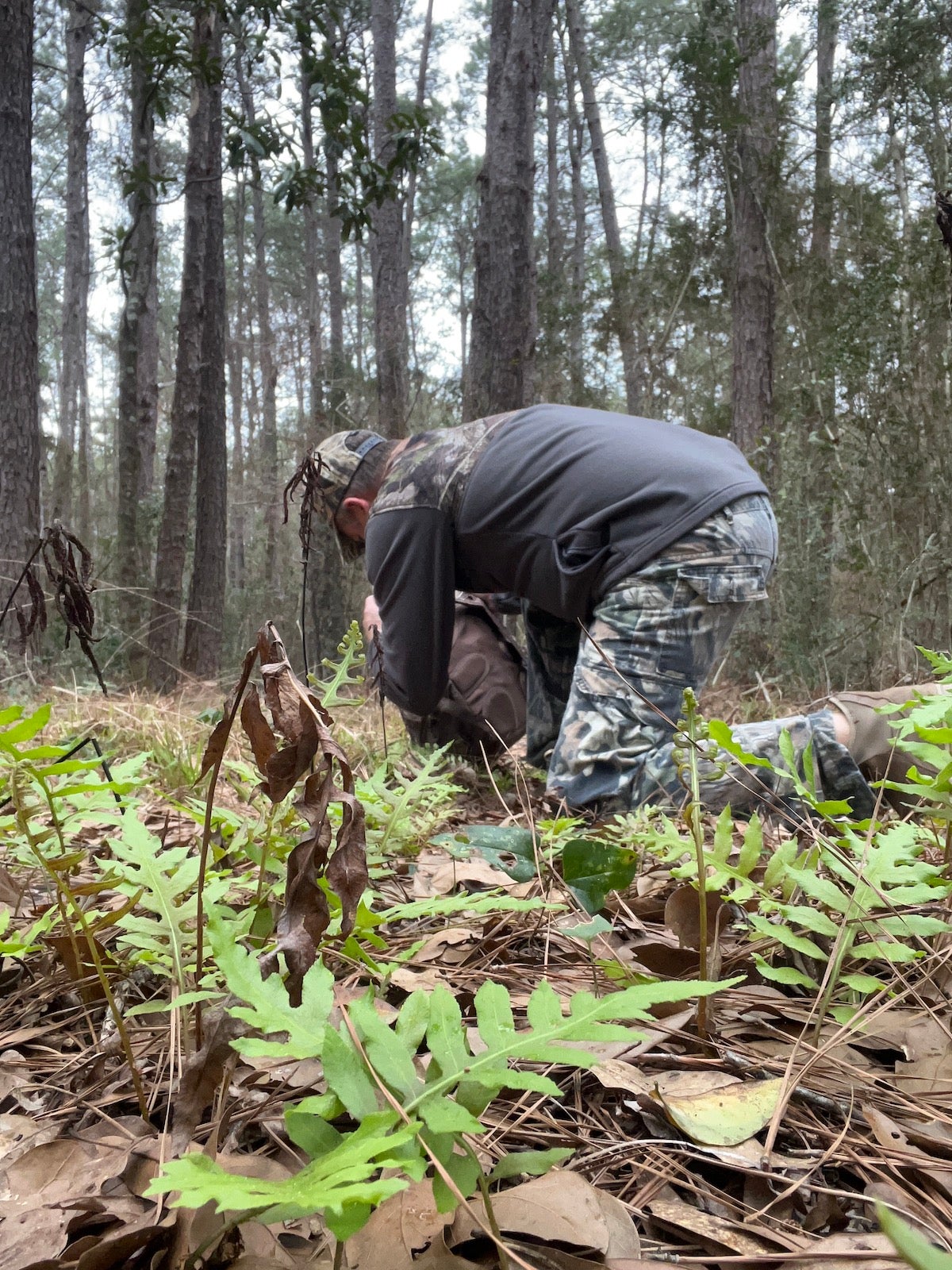
Keith Lusher 03.05.25

I can remember it like it was yesterday. It was my first turkey hunt. I walked the woodline next to a clear-cut field at the deer camp. I set up and listened to a tom gobbling his head off in the woodline on the other side of the field. I called aggressively when I finally spotted two longbeards pop out of the woods about 300 yards away. They answered but never came closer than 250 yards. Why? No decoy. Those toms could hear my calling but never saw the hen making all those sounds. I went home empty-handed that day, and looking back on the situation, I believe one simple decoy could have made the difference. The truth is, turkeys have personalities as diverse as the habitats they occupy. But most of the time, it all comes down to the time of season you are hunting. Here’s a season-by-season breakdown that’ll have you bringing in more birds and filling more tags with these turkey decoy strategies.
Early Season: Breeding Groups are your Best Bet
On opening day, turkeys are still in their winter flocks. When it’s this early in the season I’ve found that one decoy just won’t cut it. These early-season toms are looking for groups, not loners. Your best bet is to set up a breeding scenario with multiple decoys that create FOMO (fear of missing out) for any dominant tom in the area.
Turkey Decoy Strategies – The Full-Flock Spread
The most effective early-season setup is what I call the “Full-Flock Spread:” a jake decoy in full strut, a breeding position hen, and 1-2 feeding hens off to the side. This arrangement triggers exactly what those spring toms can’t resist – competition for hens. The jake is the key here. He doesn’t look threatening enough to scare off dominant birds, but he’s enough of a challenger to pull them in on a string.
What makes this early-season spread so deadly is how it plays on a tom’s breeding instincts. When he spots what looks like a young challenger getting all the attention, that dominant bird will often come running in without a single call. I’ve had two-year-old toms literally attack my jake decoy before I could even get a shot off.

Place this spread in open areas where turkeys naturally gather in the morning – field edges, logging roads, or food plots. Position the jake and breeding hen as the centerpiece, with the feeding hens about 5 yards away. Make sure the jake is facing into the wind (turkeys always approach facing the wind), and position yourself 20 yards behind the setup with a clear shooting lane.
Remember though, in nature, hens usually come to the toms, which is why you’ll often see a gobbler hang up in an open area while approaching your decoys—he expects the ladies to come see him. The full spread helps overcome this natural hesitation.
Mid-Season: Scale Back When the Pressure Builds
By mid-season, most turkeys have seen their share of decoys and hunting pressure. That breeding trio that worked so well in early season can now spook birds that have already encountered similar setups. This is when I scale back and get more strategic with my decoy choice.
Turkey Decoy Strategies – The Jake and Hen Classic
The “Jake and Hen Classic” is my go-to for mid-season hunts. I’ll pair an aggressive 3/4 strut jake with a single hen. The hen’s pose seems to have little bearing on this spread’s effectiveness; I’ve used alert, feeding, and breeding hen decoys with virtually the same results.
What makes the mid-season jake and hen so effective is subtlety. These birds have been hunted for a few weeks now, and they’ve learned that groups of turkeys in fields can spell danger. I believe a smaller spread appears more natural at this point in the season.

Mid-season is also when I pay extra attention to decoy positioning. That jake and hen need to be visible from a distance, but not so exposed that approaching birds can study them for too long. I like to place them just inside a field edge or in a small clearing where birds will spot them but will need to come closer to get a good look.
Turkey Decoy Strategies – Know When to Ditch the Jake
If you come up on a bird that becomes skittish or simply doesn’t commit to your jake-and-hen setup, try running just one or two hen decoys. Some gobblers – especially subordinate ones – have lost battles and gotten rocked by older toms. They need time to shake it off and aren’t looking for another fight.
After the flocks have broken up, many hunters do best with just one or two hens – at least one should be in a feeding position to signal a relaxed, natural scene. When hunting a henned-up tom that won’t leave his ladies, I like to push the envelope. Get into his wheelhouse with a solo aggressive jake. The last thing he wants is a punk getting near his hens
Late Season: Ditch the Toms and Focus on Hens
As May approaches and breeding activity slows down, those toms that have survived this far are the most educated birds in the woods. They’ve seen it all and survived, which means your decoy strategy needs to change again.
Turkey Decoy Strategies – The Solo Hen Strategy
By late season, most hens are nesting, and the few that are still out are the ones that haven’t been bred. The toms know this, and they’re looking for these last receptive hens. My late-season spread is simple but deadly effective: a single feeding hen decoy. Not a breeding position, not a lookout – just a hen with her head down, feeding contentedly.

This late-season approach works because it matches the natural pattern of the woods at this time. A single hen, not paying attention to her surroundings, feeding in a secluded area, is exactly what those late-season toms hope to find. Combine this with soft, subtle calling (no aggressive yelping) and you’ve got a setup that even the wariest gobblers will investigate.
Place this lone hen in areas where turkeys naturally feed in late morning – freshly greened-up pastures, recently burned areas, or along logging roads with new growth. These birds aren’t rushing around chasing hens anymore; they’re methodically covering ground looking for the last breeding opportunities.
Final Thoughts – Turkey Decoy Strategies
The hunters who consistently tag out aren’t necessarily the ones with the most expensive decoys; they’re the ones who understand turkey decoy strategies, behavior, and match their fake birds to what real turkeys expect to see. Use the most realistic decoys you can afford, but they don’t have to break the bank. Many manufacturers offer great-looking fakes at reasonable prices.
Look for decoys that twirl or pivot naturally on their stake, imparting movement into a spread. Sometimes, that life-like turn or spin can convince a skeptical gobbler he’s looking at real turkeys. Put these seasonal strategies to work, and you’ll start thinking like a turkey instead of looking like one.
Trending Products










